
Aechmea : planting, growing, and care
Contents
The Aechmea in a nutshell
- The Aechmea is an indoor plant from the Bromeliaceae family, a cousin of the pineapple.
- Native to South America, this epiphytic plant has stiff, broad leaves arranged in a rosette.
- This plant flowers only once in its lifetime, but the inflorescence lasts for six months.
- To encourage reflowering, it is essential to remove and replant an offset.
- Low-maintenance, the Aechmea thrives indoors at temperatures between 18 and 20°C.
The word from our expert
In its natural habitat, the tropical and subtropical forests of Latin America, Aechmea is an epiphytic plant: its aerial roots allow it to feed on decomposing leaves and the droppings of birds and monkeys. Of course, in our latitudes, it is cultivated as a houseplant, with an exotic appearance, but it is essential to respect its natural growing conditions. And it will reward you with evergreen foliage, with thorny edges, arranged in a rosette, from which emerges a unique inflorescence that can last for more than six months. However, like all plants in the Bromeliaceae family, flowering signals the death of the rosette. That said, offsets form in parallel, allowing the Aechmea to renew itself. Most often, it is purchased already in flower, and it will remain ornamental for many months, provided it enjoys moderate light and regular watering with non-calcareous water.
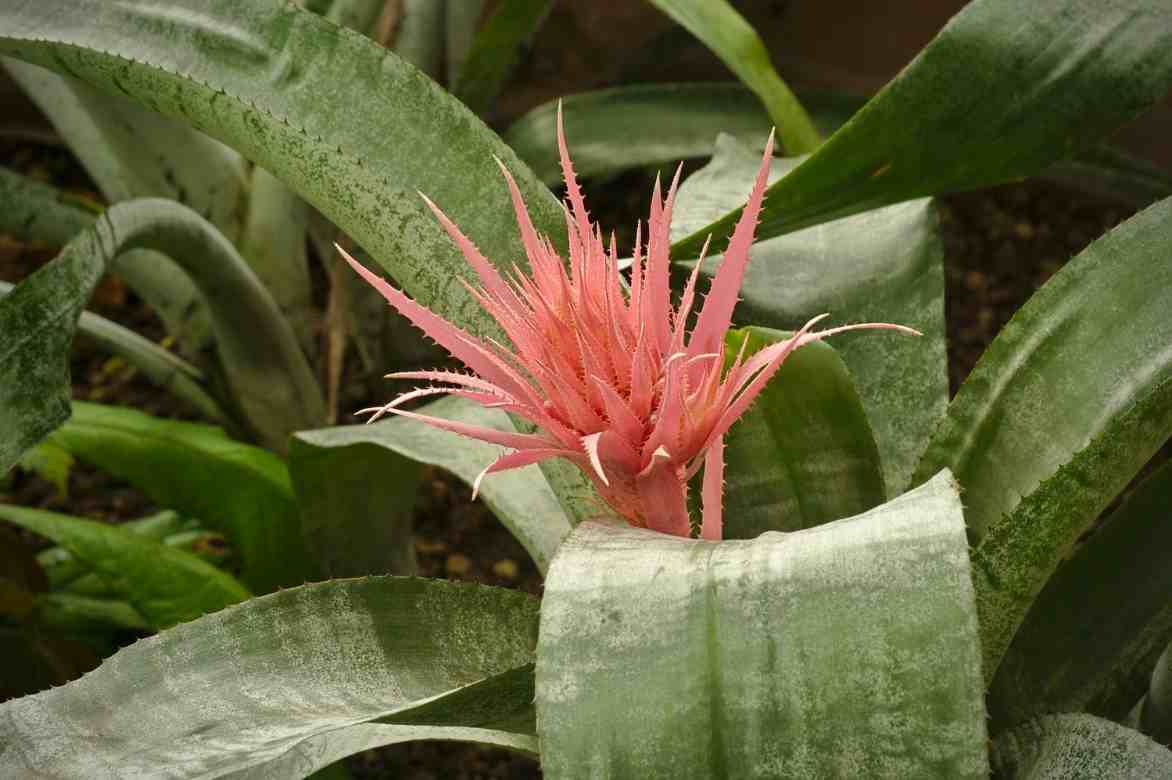
Aechmea fasciata
botany
Botanical data
- Latin name Aechmea
- Family Bromeliaceae
- Common name silver vase
- Flowering from April to October
- Height Up to 1 m
- Exposure moderate light
- Soil type acidic
- Hardiness frost-tender
The Aechmea is a stemless plant, native to the tropical and subtropical forests of South America. It is actually a genus of plants belonging to the Bromeliaceae family, just like the pineapple, the Guzmania, or the Tillandsia. Most members of this botanical family grow as epiphytes, clinging to the bark of trees. They feed on decomposing leaves and excrement that accumulate in the crevices of trunks, thanks to their aerial root system. As for rainwater, it collects between the gutter-like leaves, forming a cup-shaped reservoir. These plants therefore need humidity and moderate light to recreate their natural environment. Species in the Bromeliaceae family also have the peculiarity of taking many years to flower. And, after the flowering period, which lasts for many months, the rosette of leaves withers, but not without producing offsets at its base, allowing the plant to persist.
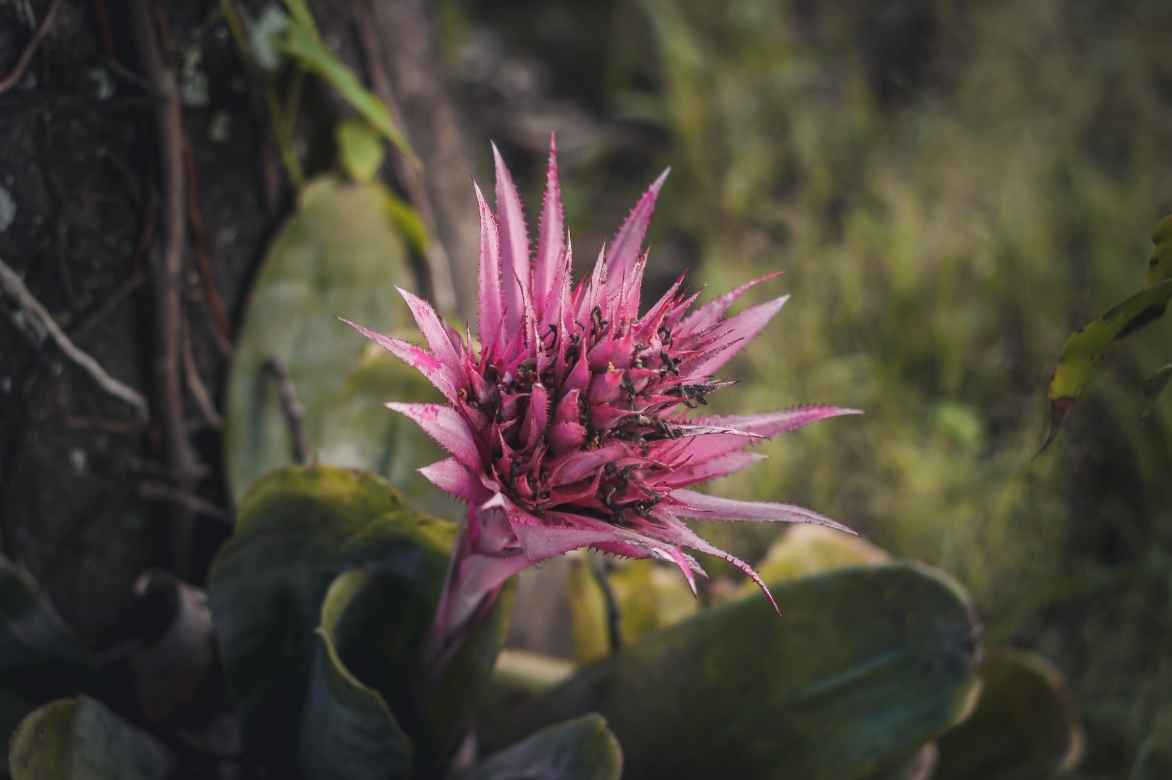
In its natural habitat, the Aechmea is an epiphytic plant that grows on tree trunks
Etymologically, the term “Aechmea” derives from the Greek “akmê,” meaning point or spearhead, likely referring to the very pointed tips of the flower calyxes.
The Aechmea genus includes over 250 different species, some of which are commonly cultivated as houseplants in our latitudes. Starting with Aechmea fasciata (syn. Billbergia fasciata), commonly known as the silver vase, the most widespread, with its fleshy, broad foliage that blooms in light pink to crimson. In stores, you can also find Aechmea fulgens, with dark green leaves dotted with greyish reflections and spike-like inflorescences. The species Aechmea tayoensis, native to Ecuador and Peru, features simple, linear leaves with serrated edges and strongly veined in brown. Its inflorescence consists of orange-red bracts and yellow flowers. The species Aechmea chantinii also attracts interest with its bright green foliage striped transversely with dark green or grey and its inflorescences with red or orange bracts adorned with red flowers. To this multitude of species, numerous cultivars are added, expanding the range of foliage and flowering options.
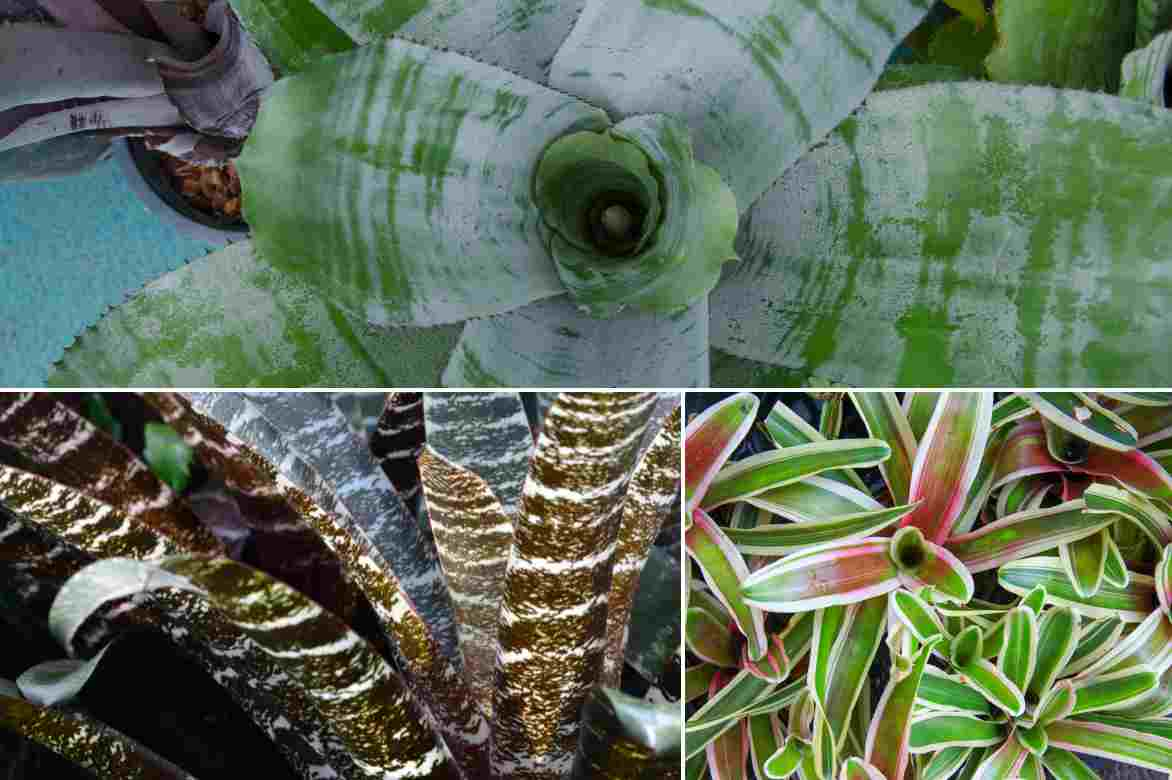
The Aechmea offers rosettes of highly varied foliage depending on the species
The Aechmea is therefore a herbaceous, epiphytic, and stemless plant with tough, rigid, and very broad foliage. Some leaves with rounded tips can reach 10 cm in width. These leaves, curved and denticulate at the edges, are arranged in a rosette. Tightly overlapping each other in a spiral, the leaves form a sort of cylinder that, in nature, allows them to store rainwater or dew. The leaves of some Aechmea species are covered with a greyish bloom made of scales, which disappears upon contact or when sprayed with hard water.
After a few years, a unique inflorescence emerges from the rosette, resembling a floral spike, composed of numerous bracts, which can last for at least six months, and small flowers, varying in colour depending on the species. These flowers evolve during the flowering period but live only briefly. As with most Bromeliaceae, this flowering symbolises the death of the rosette. However, the “agony” can still last a year.
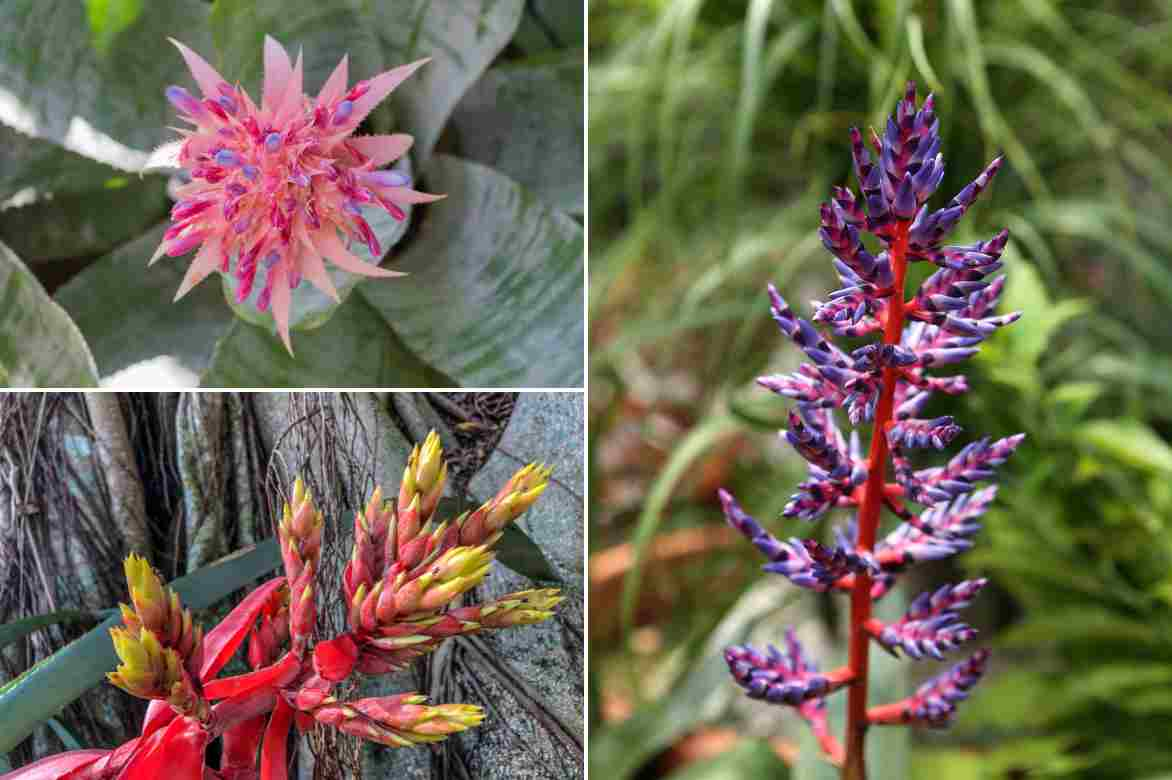
Flowers of the different Aechmea species
Nevertheless, the plant ensures its longevity by producing offsets at the base. By allowing their root system to develop minimally, it is then possible to cultivate them separately. But it will take many years before a new inflorescence appears, provided it is placed in a very bright atmosphere with high humidity. However, the foliage offers undeniable ornamental appeal.
Due to its cultural needs and spiny appearance, the Aechmea is best cultivated alone in a pot. In stores, Aechmeas are usually purchased already in bloom.
Several species to discover
| Aechmea Liliana |
| Aechmea Pepita |
| Aechmea tayoensis |
| Aechmea ‘Rebecca’ |
How to plant the Aechmea?
When to Plant Aechmea?
As an indoor plant, Aechmea can be planted at any time of the year.
How to Plant It?
To recap, Aechmea is an epiphytic plant, so it requires a substrate tailored to its needs. This substrate should be light and as porous as possible, preferably slightly acidic, and provided in small quantities. Indeed, Aechmea thrives when confined in a narrow pot, almost to the point of instability, and perfectly drained, with good depth.
You can plant Aechmea in a special orchid compost, or in a mix of heather soil, leaf compost, and sand. A blend of pine bark, sphagnum moss, and coconut or wood fibres can also suit Aechmea.
- Choose a small container, as Aechmea has a very shallow root system and prefers to feel snug. The pot must have drainage holes.
- Add a layer of sand or gravel at the bottom of the pot.
- Remove the Aechmea from its pot and gently loosen the roots.
- Place the root ball in the pot, taking care not to damage the roots.
- Fill in with the substrate.
- Lightly firm down and water.
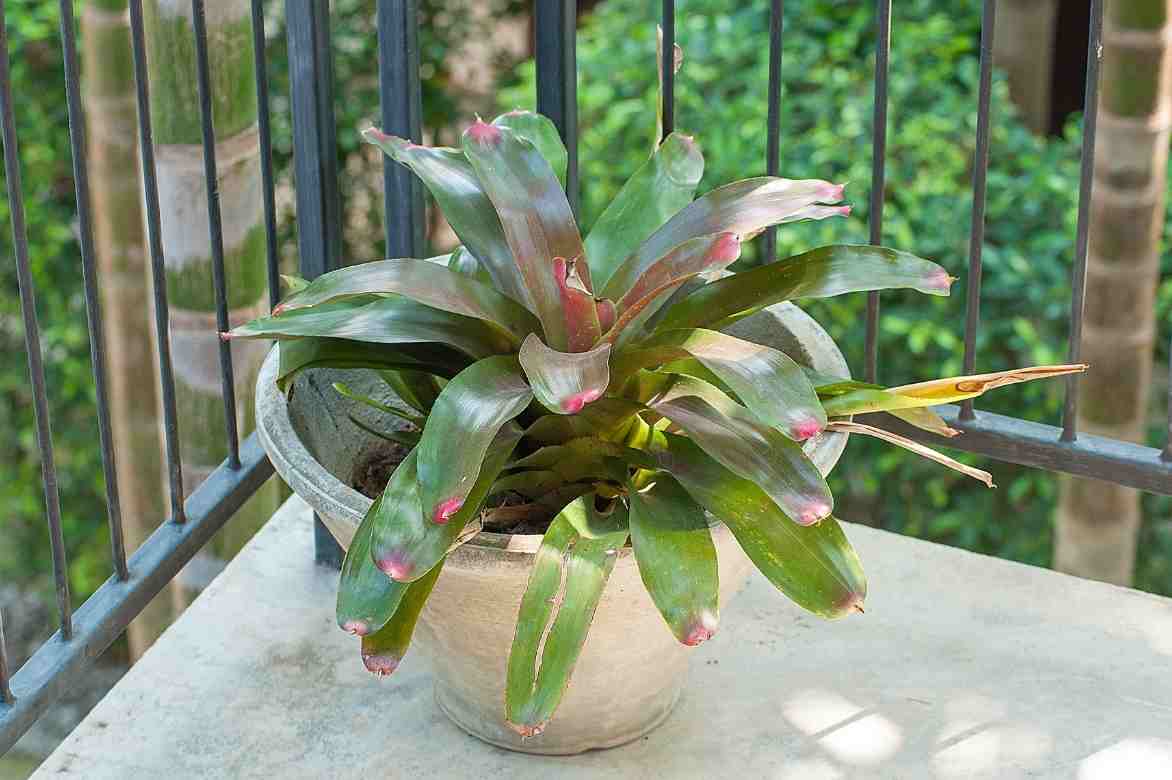
Where to Place It?
Aechmea requires moderate light, and direct sunlight should be avoided. Species and varieties with variegated foliage need slightly more light, though not intense.
However, as Aechmea is very sensitive to cold, ensure a minimum temperature of 13°C. Ideally, in winter, this plant should be placed in a bright room or conservatory, with temperatures between 16 and 16°C. It should never be placed near a heat source. For the rest of the year, it tolerates the slightly dry atmosphere of our homes, though it still requires some humidity.
It also dislikes cold drafts.
Aechmea can spend the summer outdoors in the garden. Ensure it is placed in the shade of a deciduous tree and remember to water it.
How to care for Aechmea?
To keep an Aechmea healthy, it requires minimal care. Watering is essential.
Watering
Watering should be regular in summer, about twice a week, and less frequent in winter. Watering should be moderate, as the weak root system does not allow rapid absorption of water. As a result, this plant, like many Bromeliads, is susceptible to collar rot when the collar is in contact with overly moist substrate. Therefore, water regularly but in small amounts. Above all, ensure to remove any residual water from the saucer or decorative pot. In winter, wait until the substrate is completely dry between waterings.
It is also possible to keep the cylinder of leaves filled with rainwater, to recreate the plant’s natural living conditions, provided the collar remains dry. Alternatively, you can occasionally mist the foliage with non-calcareous water. However, never rub it with a cloth or sponge, as this could damage the surface tissues.
Watering must always be done with non-calcareous water at room temperature. Rainwater is perfect, but demineralised water can also be used. The plant would not tolerate internal and external humidity.
Fertilisation
You can, optionally, apply a special orchid fertiliser once a month, from March to October, to prolong flowering.
Repotting
Since the rosette dies after flowering, repotting is unnecessary. However, you can replant offsets to propagate the plant.
Pruning
The Aechmea does not require pruning. However, you should cut the flower spike at the base once it has faded. This will encourage the development of offsets.
→ Also read our article Aechmea: Care Through the Seasons
How to propagate Aechmea?
Propagation of the Aechmea occurs when the rosette has died. If your Aechmea has produced offsets at the base, it is possible to repot them. Allow them time to develop their rudimentary roots properly to cultivate them separately, at a temperature of at least 18°C, without direct sunlight, and with moderate watering. The offsets are removed by detaching them from the mother rosette.
If the offsets do not have enough roots, they will be treated as cuttings. They will need to be planted in buckets filled with a very light, barely moist substrate.
Diseases and Pests of Aechmea
The main issue that the Aechmea may encounter is root and collar rot. The leaves rot at the base, detach, and fall off. The roots, which are underdeveloped, also rot. The plant appears unbalanced and topples over. These symptoms are particularly common in autumn and winter. Simply reduce watering and ensure the saucer is emptied systematically.
In terms of parasites, the Aechmea is susceptible to attacks by mealybugs and woolly aphids. I invite you to discover how to recognise and treat them in these two articles: Mealybugs: identification and treatment and Aphids: identification and treatment.
How to pair the Aechmea in an interior setting?
The Aechmea, a multifaceted plant, integrates elegantly into many decoration styles. Its graphic appearance makes it an asset for modern and minimalist interiors. Pair it with straight lines and raw materials like resin or metal for a striking contrast. The company of Sansevieria trifasciata or “mother-in-law’s tongue,” with its rigid and graphic leaves, will create an interesting contrast with the Aechmea.
For a more bohemian style, opt for macramé or wicker baskets to hang your Aechmea. You can pair it with Tillandsias, these air plants that you could attach to pieces of driftwood to add a natural touch. Ferns with their delicate fronds, displayed in wicker planters, can balance the rigidity of the Aechmea.
In a tropical interior, the Aechmea will find its place among other green plants and exotic patterns. It will particularly thrive alongside other plants from the Bromeliaceae family, sharing the same cultural needs. Thus, a pineapple plant, a Guzmania, or a Neoregelia will bring this exotic touch to an interior furnished with rattan or bamboo.
To go further...
- Feel free to explore our wide range of houseplants
- We also offer numerous books on houseplants to help you select, plant, and care for your plants. Among our selection, Houseplants: Stylish and Easy to Care For by Léon Gynelle can assist you in choosing the most suitable houseplants for your décor.
- Subscribe!
- Contents
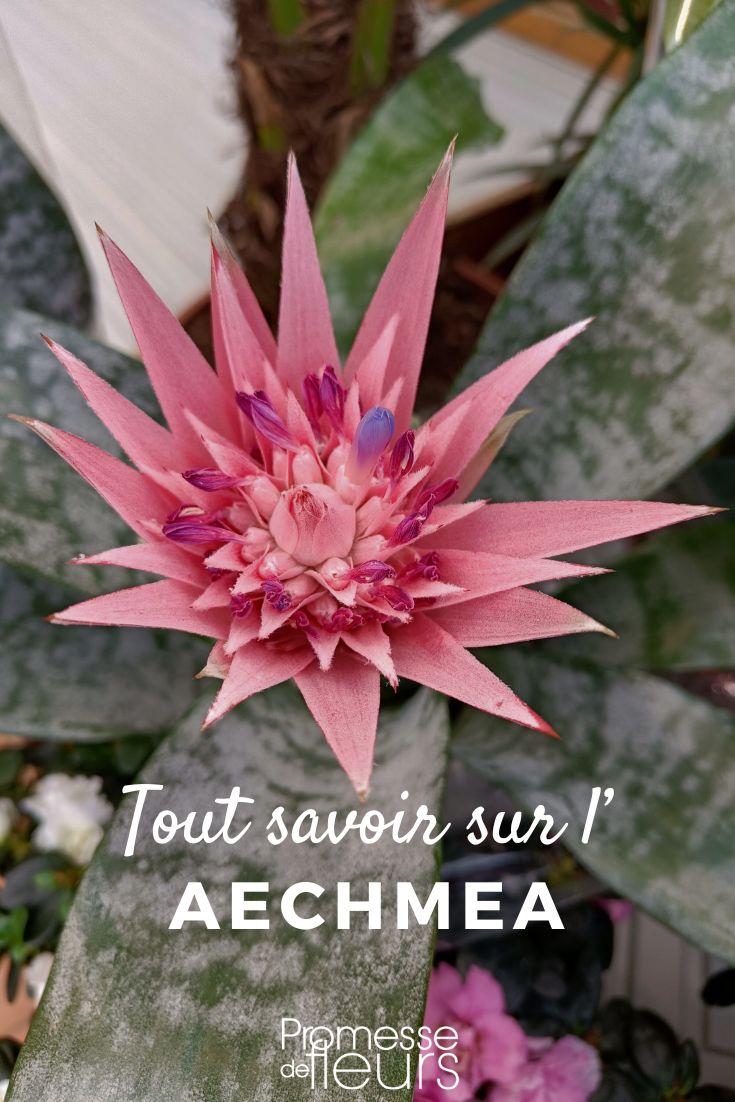































Comments